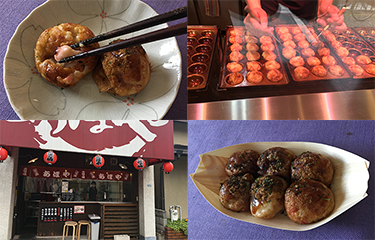A new research paper is providing a comprehensive look at how the world catches, trades, and eats octopus.
The paper, World Octopus Fisheries (Sauer et al., 2019, Reviews in Fisheries Science & Aquaculture), has 48 authors, who collectively studied more than 20 octopus species harvested from 90 countries. The ecological and biological features, catches, and key aspects of management, as well as major importing and exporting nations, and trading trends are all covered by the study.
According to the study, currently, the top supplier on the world market is West Africa – specifically, Morocco, Mauritania, and Senegal; and the largest importers are Spain and Japan. But the octopus Japan imports from West Africa, Octopus vulgaris, sold as “madako” (common octopus), is not actually the same species as Japan’s madako. O. vulgaris is a catch-all species name, meaning that several similar species around the world are called by the same name. The octopus caught in Japan is a distinct species, for which the name Octopus sinensis has been proposed by one of the paper’s authors, Ian Gleadall.
“The overwhelming amount of O. vulgaris imports (labeled “madako”) has been masking the dramatic decline of the local O. sinensis (also labeled “madako”),” Gleadall writes in the report. Gleadall has suggested labeling the imports with the Japanese name “chichukai madako” (literally “Mediterranean common octopus”) to make consumers aware of the decline in the local species.
The common octopus dominates Japan’s market due to the widespread popularity of “takoyaki,” fried balls of batter containing a piece of octopus. In Japan, this is a common street food – about as common as a hot dog cart in New York City. In Osaka, six balls of takoyaki can be had for JPY 400 (USD 3.72, EUR 3.43).
While popular, the local O. sinensis catch makes up only a part of Japan’s overall domestic haul of octopus. Enteroctopus dofleini, the giant Pacific octopus (“mizudako” in Japanese), together with O. conispadiceus, the chestnut octopus, which are both caught mostly around Hokkaido, are equally important in Japanese cuisine. These are mostly eaten as sushi, while another important species, Amphioctopus fangsiao, (the webfoot octopus, or “iidako” in Japanese) is mostly boiled whole and used in a hot-pot dish called “oden.”
In 2017, Japan imported 23,763 metric tons of octopus. The major sources were: Morocco (9,034 MT), Mauritania (8,118 MT), China (3,995 MT), Vietnam (1,338 MT), Senegal (304 MT), Mexico (302 MT), Thailand (289 MT), and Chile (143 MT). Meanwhile, Japan’s domestic catch has fluctuated in recent decades between 40,000 and 60,000 MT, but is currently in decline.
The giant Pacific octopus and the chestnut octopus are cold-water species that take three to five years to mature, nurture young, and die, while madako, which accomplishes all this in one year, is most abundant in the warmer southern Central Pacific coast and the Seto Inland Sea. Much of the decline in the Japanese octopus catch may actually be the result of cleaner water, Gleadall told SeafoodSource.
“Declining catches of many animal groups seem to be tied to coastal waters being ‘too clean,’” he said. “I've heard that said about the massive decline in shellfish around the country – shellfish are filter-feeders, so if there is little organic matter in the water (because it is ‘too clean’), the population that can be sustained will be lower. There are a number of papers concerning declines of other animal groups, such as prawns, for example. Dams for reservoirs and clean-up of effluent reaching the coast seem to be big factors.”
Gleadall said some shifts and declines in populations can be attributed to the effects of global warming. However, even as many octopus species struggle with rapidly-changing habitat conditions, they are being caught in increasing numbers.
“Total reported global production of octopuses over the past three decades indicates a relatively steady increase in catch, almost doubling from 179,042 MT in 1980 to 355,239 MT in 2014,” the paper reported.
Outside of Japan, Octopus maya, from the Bay of Campeche, Mexico, was first described as a distinct species from O. vulgaris in 1966. It now accounts for about 35 percent of the world octopus harvest, and is the most commercially important species in the Americas. Much of the O. maya catch is exported to the European Union.
In Mexico, a type of octopus mariculture – an "octopus product system" – has been introduced.
“[It] is unique to O. maya as far as I know,” Gleadall said. “There, they are the closest of anyone to reaching commercial aquaculture of octopus.”
Octopus maya culture is being developed at the Universidad Nacional Autonoma de Mexico at a pilot scale. A closed culture system of O. maya is operating at out of Yucatan facilities in Sisal. More information about this system can be found in a 2014 work by Rosas, Gallardo, et al.: Octopus Maya, in Cephalopod Culture.
Management of octopus around the world is complicated by the fact that the genus lives fast and dies young. The females stop eating to guard their young (numbering 100,000 to 500,000) and they die shortly after. Their short lifespan and large number of offspring makes them at once adaptable and vulnerable. They can mutate in short time, which may allow them to survive changes in seawater temperature and acidity. But as there is no generational overlap, a single year of poor recruitment can result in a severe crash of numbers without the backup of a surviving breeding population. They may also lose habitat in coral bleaching events.
“As such, there is increasing evidence that the response of octopod populations to future warming will not be straightforward, both in tropical and temperate regions,” according to the paper.
Photos courtesy of Chris Loew/SeafoodSource







